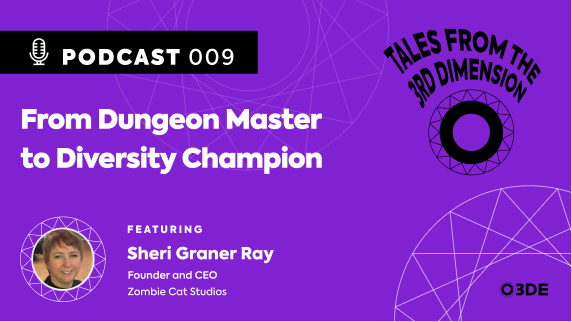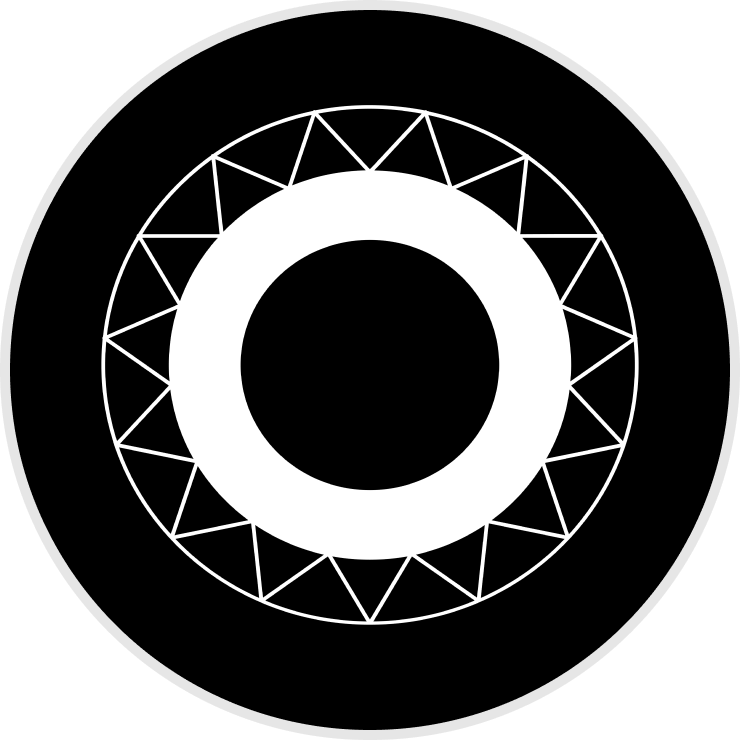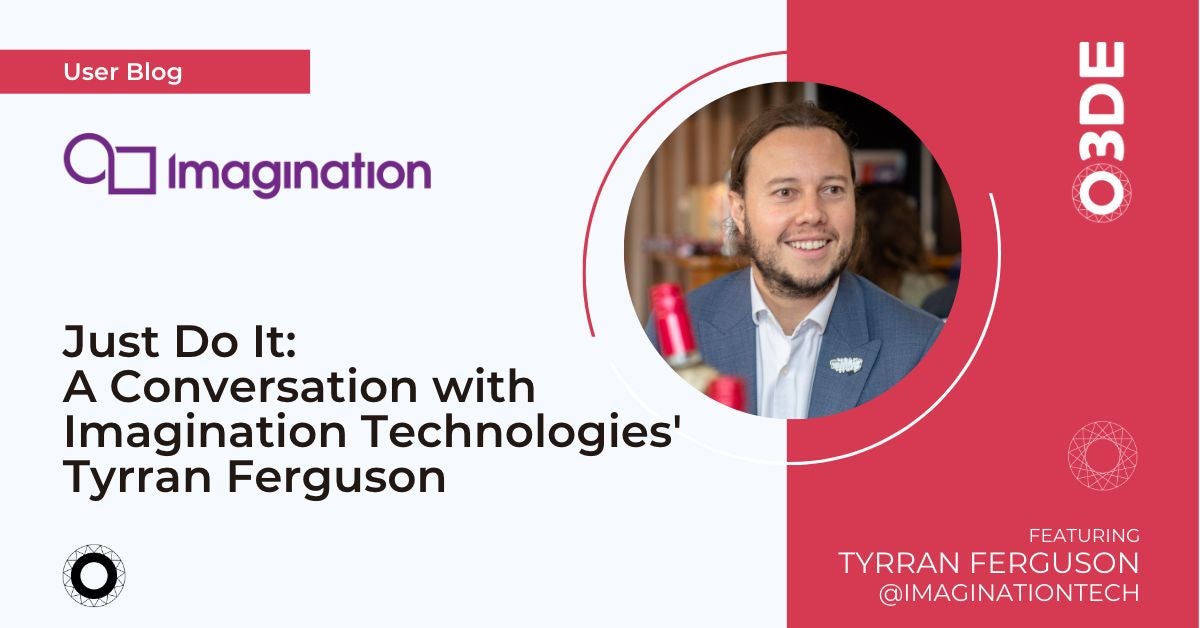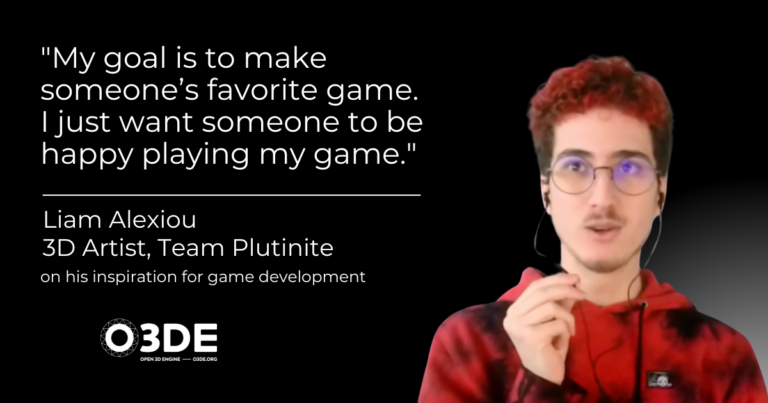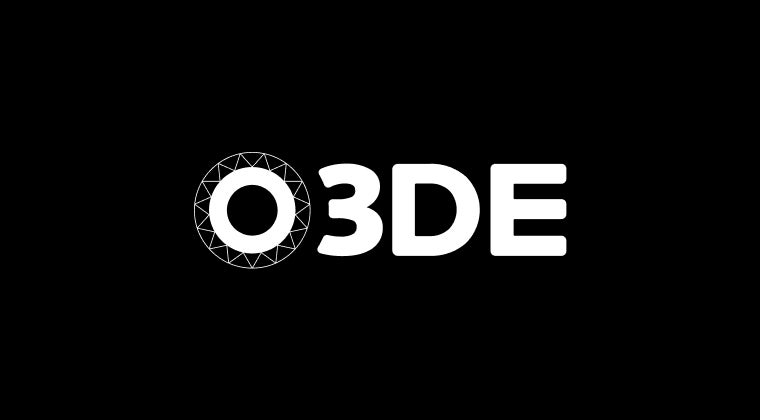As Director of Ecosystem & Gaming at Imagination Technologies, Tyrran Ferguson spends lots of time with some of the world’s top mobile game studios, ensuring that they have a good understanding of future hardware and software technologies. In this interview, Tyrran talks about how he and his team are using the Open 3D Engine (O3DE) and collaborating with the O3DE community, and what others can learn from their experiences.
Please introduce yourself and tell us what you do at Imagination Technologies.
Hi, everyone! My name is Tyrran Ferguson and I head up ecosystem activities and gaming for Imagination Technologies, based in the United Kingdom. At Imagination Technologies, we create the IP that goes into hardware for mobile, desktop & automotive GPUs, and we’re looking at technology—hardware technology, and some software technology—three to five years into the future. In my role, I look after the mobile & desktop ecosystem of video game developers and engine producers.
How did you discover the Open 3D Engine, and why did you choose to start working with it?
We were looking for an engine that was going to be first-to-market to start implementing the mobile Vulkan ray tracing extensions, which was when we started looking into the Atom renderer. And then we decided to go with O3DE because we felt that it was going to be one of the first to market when it came to the relevant Vulkan ray tracing extensions that we were looking to use.
So, it was a strategic decision. It was a tactical decision. And it was also a technological decision. Because, you know, it’s exciting, it’s this new engine that we were hoping was gonna get a lot of traction—and it has been getting a lot of traction—so that’s really paid off, in terms of us deciding to work on it. I mean, it has massive potential, especially with the open source nature of it, and that’s a big reason we decided to go with it. There’s flexibility in how the renderer will get developed. Having future access to different branches of the engine really excites us and our teams, and democratizes the access to the tools. Creativity over time is just going to get larger with that, really. So it’s just opening a wider pool for us to be able to optimize our technologies for O3DE, and then hope that O3DE really grows and expands from here on out. For a company that looks so far into the future it is also really important for us to get access to experimental branches for features we can test before hardware goes to retail, that’s a huge benefit.
How is Imagination Technologies using the Engine?
Some of the really cool stuff we’ve been doing with open source—and specifically with O3DE—is we’ve been working a lot with ray tracing, global illumination, raytraced global illumination, for mobile as well. We actually did an O3DE demo which showcased raytraced global illumination. The demo was called Buon(GI)orno because it was an Italian-styled alleyway scene showcasing GI, get it?, and it was really well received. With this demo, we were dipping our feet into O3DE, which was really exciting. It allowed us to implement our technologies and to showcase what we can start expecting that will be coming from mobile and desktop development in the future. We gifted this demo to the O3DE community as a Gem that can be downloaded by others and used as a benchmark of sorts.

Where do you think O3DE shines?
So firstly, it’s open source, which has allowed our teams of engineers and technical artists more freedom and flexibility in what they’re wanting to do and see. It has also allowed them, in part, to join the Mobile Working Group, which we’ve done in collaboration with OPPO, so we can stay close to the mobile renderer and how it gets developed, controlling our own destiny.
In terms of the tools, my technical artists have said they really like the edits. One of their favorite features is the real-time rendering of ray tracing that they use a lot. So even if they aren’t creating something specifically for an end goal in the engine, they may use it so that they can just see how the global illumination plays in the scene, how the light will bounce off of walls, what different color palettes will look like. So they use that a little bit just to play with it, just to get an idea of the interactions with the colors and the lighting and the environment. And the real-time rendering and the fact that you don’t have to bake any of the lighting there helps them just quickly run through some of that to see how it looks, which has been really good for us as well. Even if they don’t want to specifically do a demo in O3DE, they can use the editor to understand a scene and it’s ray traced lighting without having to do laborious rendering. At the end of the day, the engine is going to be completely customized, so it will allow different tools to be plugins for the engine, for the editor, to have any sort of specific adjustments or customizations made, which is really the appealing part of it. I’m sure there’s going to be tons of amazing stuff we haven’t even thought about yet that will really improve the way that the tooling and the use of the engine works over and above what we’re experiencing at the moment.
What do your partners and customers think of O3DE?
Training is a big part of our ecosystem activities, with the goal to bring our game dev partners—some of the top mobile game studios in the world—up to speed on what’s coming and what we’re going to start releasing so we can start working with them on content, optimizations and how to best implement next-gen technologies. As part of this training, we’ve been recreating game scenes from some of our game dev partners’ most popular games, and showing them the real-time ray tracing rendering capabilities on O3DE with these scenes that we’ve re-rendered ourselves, which they’ve been very excited to see.
Generally, the discussion with these game devs around open source has been very interesting, and they’re very interested in it. They’re starting to become a little more aware of it and show more of an interest in it. I think, with the current global political climate, open source engines will become even more important because of the freedom and flexibility they offer. The Open 3D Engine is decentralized and anyone can download the project, work on it themselves and create something new and beautiful that wasn’t even thought of or intended.
Can you describe your experiences with the O3DE community?
So we’ve been working a lot with AWS, Persistant Studios (PopcornFX), OPPO and Carbonated, Inc. And we’ve worked with and had many different discussions with them on both current and future activities. And the community has been super great, very supportive, friendly. A lot of us have the same end goals and objectives in place, which has already created a strong sense of collaboration in a very brief time period. Many of us are part of the Mobile Working Group, including OPPO, and we share and are working on many of the same end goals, which is awesome.
At the end of the day— and this is why I like O3DE and why I like the open source community—all boats rise with the tide. And it definitely feels like a mantra that the O3DE community around us have adopted. Everyone has been super cool to help and contribute. In the beginning, you know, it was a new tool, it was a new editor, our guys had to learn how to build the tool with the nightly builds that were available on GitHub. The AWS guys were super cool with helping us. All of these partners have gone over and above to really help us, not only understand the tool, really get to grips with it, but then also help us brainstorm and collaborate on future content that we could all build together. And where else is it happening that you’ve got an IP hardware vendor like us working with middleware providers, like PopcornFX, and then wrapping it in with West Coast indie studios, like Carbonated, and handset OEMs, like OPPO. I mean, it’s just brought all of us together into a space where I didn’t even think it was really possible for us to have these types of discussions all together, and it’s been amazing.
As you look forward, what are you most excited about?
The real-time raytraced global illumination has been a time saver for us and our engineering and technical artists, so that’s great. And that’s only going to grow as we bring in the other Vulcan ray tracing extensions, which will be really helpful. It helps us mock up different scenes for testing realistic lighting patterns—you don’t have to bake them into a scene, and you can test it in real-time, which is really helpful.
And this goes beyond just ray tracing, right? This could go to other technologies around the corner, like virtual super resolution (VSR), and how these play into engines and interact with that content. So, exciting possibilities and use cases might include having that stuff in the engine so we can play with it and see how performance output is improved with super resolution. These are really exciting things that we’re looking at.
Another exciting possibility is that there’s no political or monetary constraints when it comes to this engine. And it’s available to anyone who’s interested in working on it and really diving deep into it on a scale that we’ve really yet to see in the industry, to be honest. So I’m just really excited about what type of content different players are going to output. And I’ve seen some early builds from some of the communities around multiplayer games and inventory systems and stuff. We have this in games already, right, but the fact that it’s being done so quickly in O3DE and we’re starting to see it already now in its infancy stages is super exciting. So there’s going to be stuff that I can’t even imagine that’s going to really blow our minds in the coming years on O3DE.
Do you have any suggestions for others interested in using the Open 3D Engine?
You know, my advice would be to stop thinking about it and just do it. Jump in there, start working on the engine to create content. The most valuable thing for us and the O3DE community at large is that you just create content, right? Start committing on GitHub and being a part of the future of the engine. Download the editor, download a few gems, like our gem, and just get going. So, start looking into it and seeing how you can contribute, reach out to us and any other members of the community, and just stop thinking about it. Just do it!
